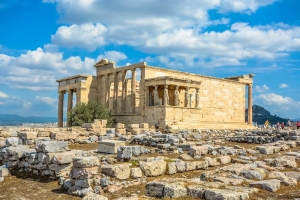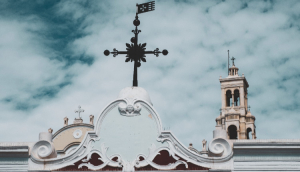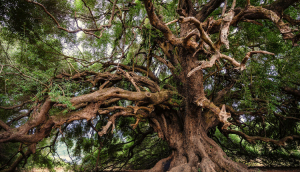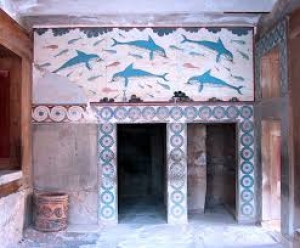XpatAthens
‘Event-ually Athens’ Campaign Promotes The Greek Capital As Year-Round Destination
ACS Athens Takes Its Partnership With Widener University To The Next Level
On April 4, 2019, representatives from Widener University and ACS Athens gathered at the Widener campus in Chester, Pennsylvania, to sign an agreement expanding the established partnership between the two schools and promoting their shared vision for education. Under the agreement, graduate programs will be offered focused on K-12 international school leadership. The agreement also allows for ACS Athens high school students to take online undergraduate courses.
Dr. Julie E. Wollman, President of Widener University, welcomed Dr. Stefanos Gialamas, ACS Athens President, Dr. Peggy Pelonis, ACS Athens Vice President and Mr. Iraklis Prokopakis, Treasurer of the Board of Trustees of ACS Athens, together with Paul Beideman, Vice Chair of Board of Trustees of Widener University and Provost Dr. Fred Akl.
Dr. Wollman highlighted: “We already have a memorandum of understanding (MOU) with our partners at ACS Athens and now we are expanding this MOU to be able to offer graduate programs to the outstanding teachers at this special school and also to be able to offer some courses for the students who wish to take college courses while they are still in high school. This is an opportunity to expand what is a wonderful partnership and we are very excited about it”. Also, Dr. Wollmann is now the newest member of the International Advisory Council of ACS Athens.
Dr. Stefanos Gialamas, ACS Athens President, remarked: ”It is very important that as the President of the Middle States Association told me, two institutions accredited by Middle States Association are getting together not for one more partnership but to pioneer the effort to bridge the gap between K-12 and higher education in terms of not only teaching and learning but also as a different way of thinking. Today, we don’t have to endure a financial crisis but more importantly an ethical one. Widener U. and ACS Athens have the same beliefs and both want to prepare tomorrow leaders with Ethos.” Also attending the signing were Nicholas Karambelas, Vice Chairman of the Board of Trustees, Arti Gyftopoulos, Board of Trustees member, and Dr. Konstantinos Koutras, Consul General of Greece in New York, who expressed their support of this partnership.
A video recording of the signing is available HERE!
Winter Quiet Hours Are Back
Discover Tinos, A Year-Round Greek Island
Even if you are not inclined to go on a pilgrimage, Our Lady of Tinos is still worth visiting. The nineteenth-century church sits on a hill above Chora, Tinos' capital, and is built in a Renaissance architectural style that sets it apart from traditional Greek churches. The shrine's icon is also worth seeing, regardless of one's beliefs. Its image is barely visible through the impressive collection of votive silver, gold, pearls, and precious stones that have been left by pilgrims and encased within the frame.
One of Tinos' most impressive features, though, is that it houses over 700 small churches. Some were built during the Byzantine era, but most were built after the Venetians conceded Tinos to the Ottomans. Through a special agreement with the Ottoman leaders, the Tinian people were granted permission to construct an infinite number of churches. Since owning a church was considered a blessing, a small chapel was erected in each property-a practice that is still very common on the island. In fact, in Tinos, you will definitely come across chapels in bizarre locations such as forests and narrow mountainous valleys.
Tinos is also known for the unique eighteenth-century dovecotes, or pigeon houses, that spot its mountainous terrain. They are a rare example of folk Greek architecture, and, while some of the other Cycladic islands also have traditional dovecotes, the pigeon houses on Tinos are the largest and most ornate.
ERGOSE Saves Hundreds Of Centuries-Old Olive Trees
ERGOSE, a subsidiary of the Greek Railway Operator constructs and maintains the railway network of the country.
During railway works, a large number of trees that would have otherwise been destroyed have been unrooted, carefully transferred, and re-planted in other areas of the country.
Recently, the company managed to save a 4-centuries old olive tree from a construction site in Patras, Peloponesse. The tree was carefully transferred and planted somewhere else in Greece.
The devastating wildfires in Eastern Attica in July 2018 not only claimed numerous human lives but were an environmental disaster that ruined the landscape in Marathon. A year later, more than 60 olive trees were planted in the cities of Marathon and Rafina, the places most affected by the 2018 wildfires.
New Framework For EU Forest Monitoring & Strategic Plans
The European Green Deal calls for action to improve the quantity and quality of forests in the European Union, so the EU can reach its goal of climate neutrality and creating a healthy environment. The new EU Forest Strategy for 2030 sets the vision for effective afforestation, forest preservation, and restoration in Europe. The Strategy also announces a legislative proposal for a forest observation, reporting and data collection framework and requires the Member States to prepare strategic plans for forests.
In addition to improving forest monitoring, this information will lead to more data-driven decision-making on forests. It is expected to increase public trust in forest management, reduce illegal logging, incentivize and reward more sustainable forest management, and support the adaptation of forests to climate change. This initiative will also help deliver a Europe fit for the digital age as it will empower people, businesses, and administrations by providing access to harmonized forest-related data and making better use of digital technologies.
To read this article in full, please visit the European Commission's official website.
Sightseeing In Kimolos
Horio is not only the main village in Kimolos, but also the island’s capital with inhabitants accounting for 90% of the island’s entire population which is nearly 800 residents. Situated in the southeastern part of Kimolos on the foot of mount Xaplovouni, the capital exudes a sense of old-world charm adorned with the brilliant architectural style of the Aegean.
The silver lined beaches, the white washed walls with the blue painted windows and the narrow pebbled streets surrounding them create an artistic landscape of tranquility. Filled with places of interest it is the principal spot of attractions and sightseeing on the island.
The Medieval Castle
Dating back to the 14th or the 16th century the Medieval Castle is located up town and comprises of the inner castle (in ruins) and the outer castle that still stands even after the pirate attack of 1638. The castle is a characteristic example of the Aegean fortification architecture with houses side by side built from solid rock, white washed walls and steel doors.
The Archeological Museum
Situated opposite to the Metropolitan church of Panagia Odigitria, the Archeological Museum hosts exhibits and archeological findings showing the history of the island including vessels and utensils from the early 7th century B.C.
To read more, please visit cycladia.com
The Best Sour Cream Substitute? Greek Yogurt
Are you having a hard time finding sour cream in Athens? Well, you can stop looking. It turns out that the best sour cream substitute, Greek yogurt, is by far the most versatile of dairy products. It is ideal to use in all types of cooking. You can use Greek yogurt to also replace cream, mayonnaise or cream cheese. You can use it cold for dips, to mix through salads, pasta or potato for a creamy finish, in ice creams or you can add it to hot meals.
Greek yogurt is an ideal yogurt for cooking as it can stand high heat without curdling. It is available in no fat, low fat and extra creamy, so there will be one to suit your needs.
Here are some suggestions for using Greek yogurt in your meals.
Makes Soups Creamy
• Chicken or vegetable soup, once cooked and blended, warm soup, remove from heat. Stand for 2-3 minutes. Stir yogurt through the soup, just long enough to warm through, then remove and serve.
• For dishes such as Beef Stroganoff, add it just at the end, stir through, then serve.
Cold Pasta Dishes
• You can use it in cold pasta salads, cooked pasta, tinned or freshly cooked fish, ham bacon or cooked chicken, diced red & green peppers, tomatoes, parsley, stir through yogurt or combination of mayonnaise and yogurt, salt and pepper to taste.
• Alternative dressing, yogurt, mayonnaise, seeded/grainy mustard, herbs – chives, parsley, etc, mix together. Add a little water if you prefer it runnier. Mix through pasta.
Hot Pasta Dishes
• Add yogurt as a sour cream substitute to the pasta sauce just before the end. Finish cooking the sauce, turn off the heat, add the yogurt and stir through until just warm. Remove and serve.
For more, please visit Ultimate Guide to Greek Food
New Evidence Reveals Knossos Three Times Bigger Than Previously Believed
Discover Athens Architecture - Ancient To Modern
To read Marissa's article in full, please visit: My Greece My Travels











